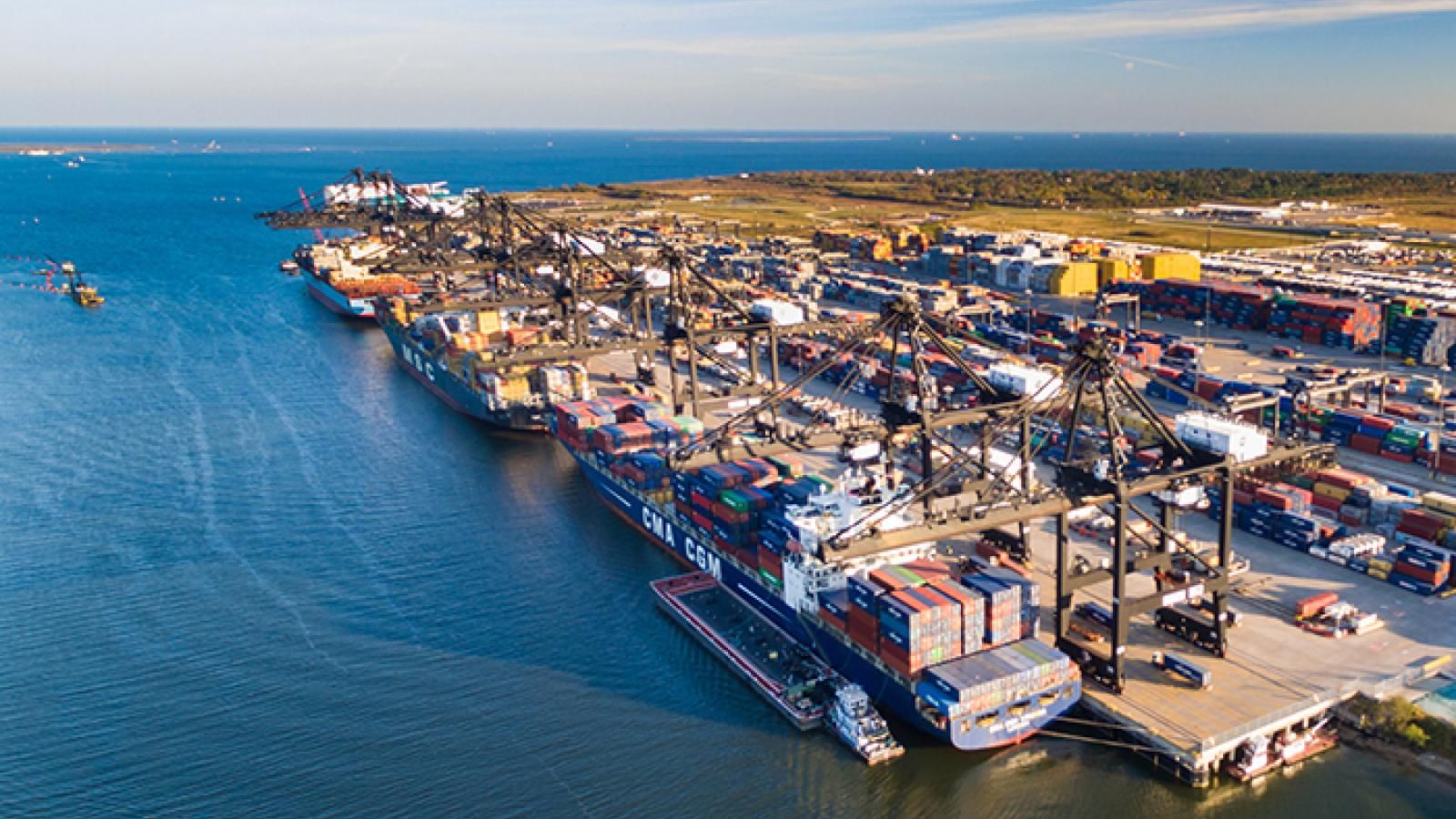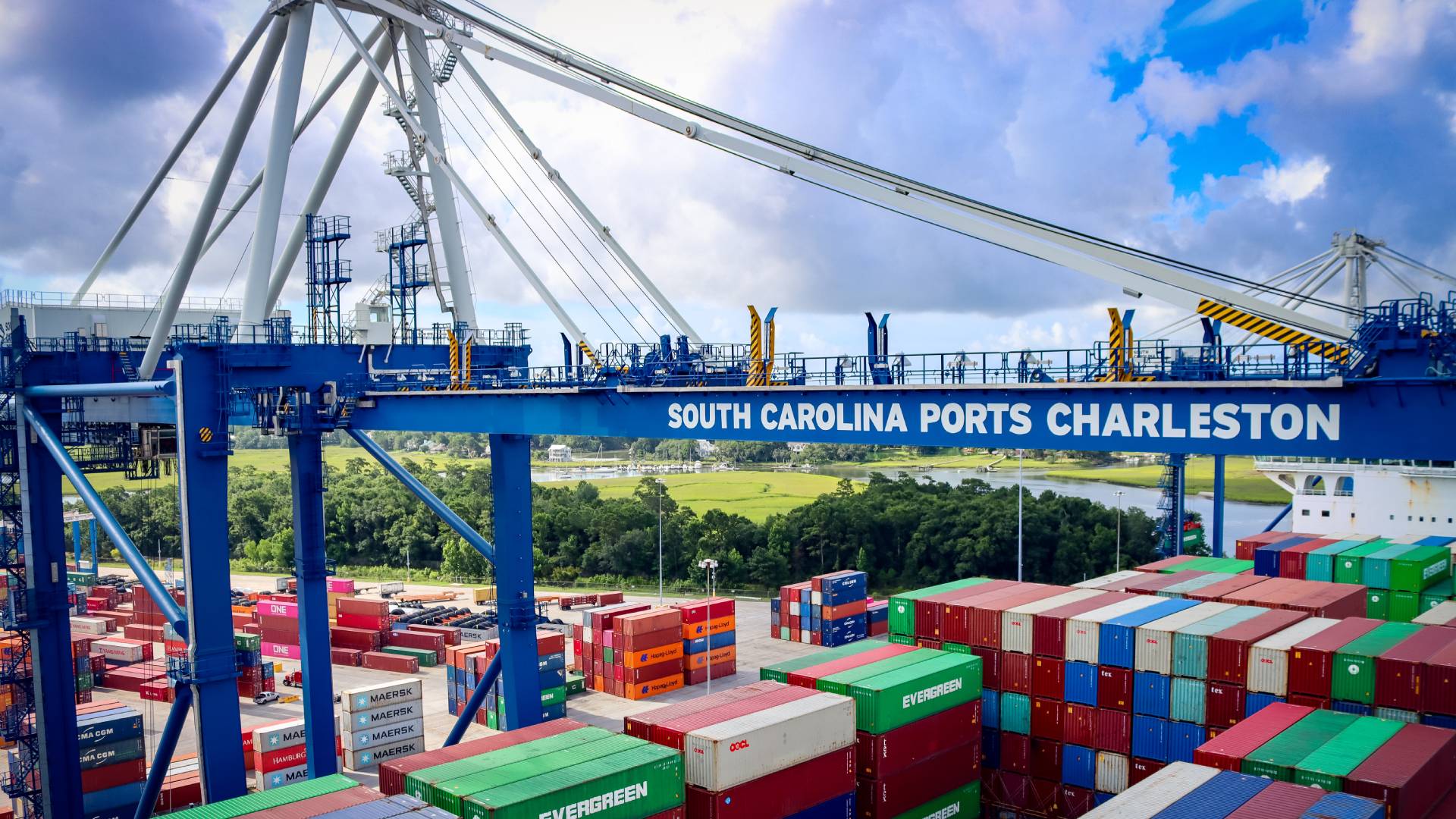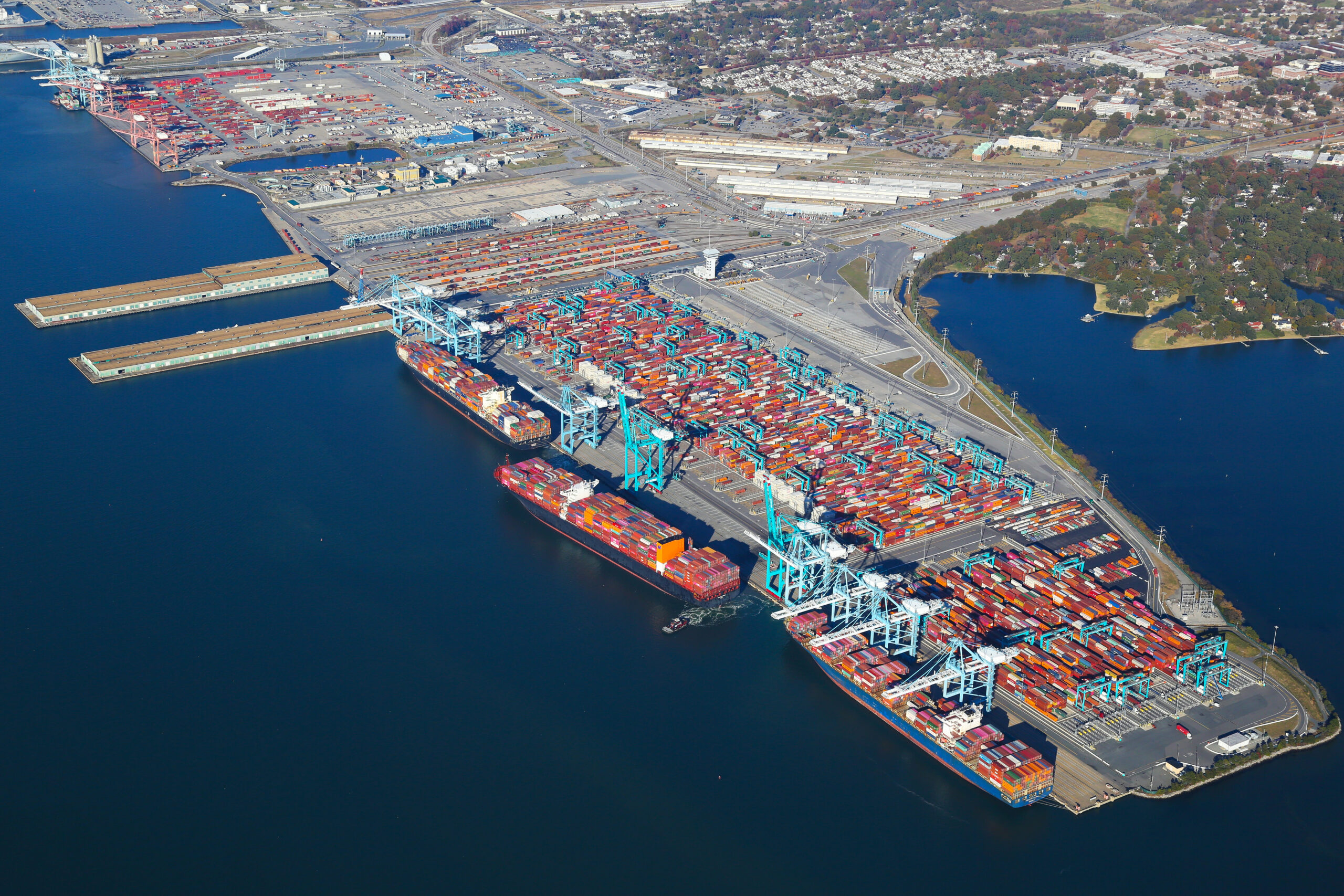A trade lane (or trade route) refers to a specific pathway along which goods are transported between two or more locations, typically across international borders. Trade lanes are established based on the flow of goods and the economic relationships between countries or regions. They encompass both maritime and air routes and play a crucial role in global supply chains by facilitating the movement of goods and fostering international trade.
Transit time refers to the duration it takes for goods or shipments to travel from their origin to their destination. It is a crucial metric in supply chain and logistics management, as it directly impacts delivery schedules, inventory levels, and customer satisfaction. Transit time encompasses the entire journey of a shipment, including transportation, handling, and processing at various checkpoints along the route.
Transloading refers to the process of transferring goods or cargo from one mode of transportation to another, typically from one type of truck or railcar to another, or from rail to truck and vice versa. This logistical practice is often employed to optimize transportation routes, reduce costs, and improve overall efficiency in supply chain operations.
A Transportation Management System (TMS) is a specialized software solution designed to streamline and optimize transportation and logistics operations within supply chains. It provides functionalities to effectively manage and control the movement of goods from origin to destination.
Transportation lead time refers to the duration it takes for goods to be transported from the point of origin to the final destination. It encompasses the time required for transportation activities, including loading, transit, and unloading, across various modes of transport such as road, rail, air, or sea.
A transshipment is the process of transferring goods from one transportation vehicle or vessel to another during their journey from origin to destination. It typically occurs at intermediary points along the supply chain route, where cargo is transferred between different modes of transportation, carriers or vessels.
Twenty-foot Equivalent Unit (TEU) is a standard unit of measurement used in the shipping industry to quantify the cargo-carrying capacity of container vessels. It represents the volume of a standard twenty-foot-long shipping container.
An Ultra Large Container Vessel (ULCV) is a massive container ship used on major trade routes, capable of carrying over 14,000 TEUs.
Vendor Managed Inventory (VMI) is a supply chain management strategy where the supplier or vendor takes responsibility for managing the inventory levels of their products at the customer's or retailer's location. In this arrangement, the vendor monitors the inventory levels based on agreed-upon criteria such as sales data or inventory levels, and initiates replenishment as needed.
Verified Gross Mass (VGM) is a term used in the shipping industry to refer to the total weight of a packed container, including its contents and packaging materials. It is a crucial requirement mandated by the International Maritime Organization (IMO) under the Safety of Life at Sea (SOLAS) convention to enhance safety in maritime transportation.
A floating structure with its own mode of propulsion designed for the transport of cargo and/or passengers. In the Industry Blueprint 1.0 "Vessel" is used synonymously with "Container vessel", hence a vessel with the primary function of transporting containers.
A vessel sharing agreement (VSA) is a cooperative arrangement between shipping companies that allows them to share space and resources on vessels for specific routes.
Vessel bunching refers to the situation where multiple vessels arrive at a port simultaneously or within a short period, leading to congestion and delays. This clustering of vessels can overwhelm port facilities, causing extended wait times for berthing, loading, and unloading operations.
A vessel call sign is a unique identifier assigned to a ship for radio communication purposes. It is used to distinguish the vessel from others in maritime communication systems, including VHF radios and satellite communications.
A vessel omission (sometimes called a port omission) occurs when a scheduled vessel does not call at a planned port during its voyage. This disruption means that the vessel skips the port entirely, which can impact the transportation and delivery schedules of goods.
In cargo shipping, vessel rotation is the planned sequence of port calls that a shipping vessel follows on its route to optimize cargo loading and unloading operations.
The timetable of departure and arrival times for each port call on the rotation of the vessel in question.
A journey by sea from one port or country to another one or, in case of a round trip, to the same port.
Warehouse utilization is a logistics metric that refers to the effective use of available warehouse space for storing goods and inventory.
Order for specific transportation work carried out by a third party provider on behalf of the issuing party.
Logistics yard management refers to the process of overseeing and controlling the movement of trucks, trailers, containers, and other vehicles within a yard or distribution center. This includes tasks such as scheduling, tracking, and coordinating the arrival, departure, and storage of these vehicles.

Global Port Performance: August 2025
North American Port Performance Special
How Are The Ports Faring? January-August 2025
Across North America's key maritime gateways, the 2025 performance picture reveals consistent patterns of operational efficiency and areas for improvement
Eight months into 2025, North America's major ports show varied performance across anchor times, berth processing, and container dwell periods. The data provides clear insights into which gateways are maintaining operational efficiency and which face ongoing challenges with processing capacity and coordination.
Understanding these performance differences helps supply chain professionals make informed routing decisions and capacity planning choices. For comprehensive global port performance data and real-time supply chain visibility, explore Beacon's tracking solutions.
Regional Performance Overview
The performance overview shows West Coast ports with the widest efficiency variation, East Coast facilities delivering more consistent results, and specialized gateways like Houston and Kingston operating with different performance characteristics due to their cargo mix and operational focus.
Anchor Times: Harbor Access Efficiency
Vessel waiting times before berth assignment indicate harbor coordination effectiveness
Average Anchor Waiting Times (Hours)
Seattle/Tacoma maintains the most efficient harbor operations with minimal anchor waiting throughout 2025. The coordination between terminals, pilot services, and harbor management creates smooth vessel flow.
Los Angeles shows notable improvement from over 12 hours in January to under 2 hours by August. The operational changes demonstrate measurable progress in harbor efficiency.
Savannah experiences variable performance with month-to-month changes ranging from 5 to 25+ hours, creating challenges for precise delivery scheduling. Track your shipments in real-time to navigate these port variations effectively.
Berth Times: Vessel Processing Efficiency
Time at berth reflects terminal productivity and cargo handling capacity
Average Berth Processing Times (Hours)
East Coast ports generally demonstrate more efficient berth operations. Norfolk, Charleston, and New York/New Jersey maintain 1-2 day processing times while handling significant container volumes.
West Coast major ports show longer processing times, with Los Angeles and Long Beach requiring 3-4 days for vessel operations. These extended times reflect the combination of high volumes and operational coordination challenges.
Houston's processing times reflect its cargo mix of containers, energy products, and specialized commodities that require different handling procedures. Learn more about supply chain analytics to optimize your port selection strategy.
Container Dwell Times: Cargo Release Performance
Container dwell periods indicate how efficiently cargo moves from port to supply chain
Container dwell times show more consistency across most North American ports compared to vessel processing metrics. Most gateway ports maintain 3-5 day averages for cargo release.
For detailed container tracking and port performance monitoring, Beacon provides real-time visibility into these critical supply chain metrics.
Performance Trends: Eight-Month Analysis

Ports Showing Improvement
Los Angeles reduced anchor waiting times significantly, from 12+ hours in January to under 2 hours by August. The improvements in harbor efficiency demonstrate progress in operational coordination.
Charleston achieved steady reductions in anchor delays through consistent month-over-month improvements. The port maintains efficient berth operations while handling growing volumes.
Norfolk delivered gradual improvements across multiple metrics, combining infrastructure advantages with operational focus to enhance gateway performance.
Consistent Performers
Seattle/Tacoma maintained efficient operations across all metrics while processing increased container volumes. The port demonstrates reliable performance patterns over the eight-month period.
Vancouver showed steady operational performance with gradual improvements in some areas. The port provides consistent service levels for trans-Pacific cargo flows.
New York/New Jersey maintained adequate processing times while handling substantial container volumes, demonstrating operational stability at scale.
Ports Facing Challenges
Long Beach experienced gradual increases in berth processing times despite infrastructure investments, indicating ongoing coordination challenges between terminals and supporting services.
Savannah shows variable anchor time performance that creates uncertainty for vessel scheduling and cargo delivery planning.
Access comprehensive port performance reports to stay informed about operational changes affecting your supply chain routes.

Regional Analysis: Performance by Coast
West Coast: Mixed Performance Patterns
The Pacific Coast shows varied efficiency levels with Seattle/Tacoma delivering good performance while Los Angeles and Long Beach face ongoing operational challenges.
Infrastructure investments at California ports haven't yet translated to improved processing efficiency. Despite equipment upgrades, vessel processing times remain longer than East Coast competitors.
Oakland provides reliable operations at a smaller scale, demonstrating that mid-sized ports can maintain consistent performance with less complex coordination requirements.
East Coast: More Consistent Operations
Atlantic gateways generally maintain efficient operations while handling increased container volumes. Charleston, Norfolk, and New York/New Jersey show steady performance across most metrics.
Infrastructure improvements are supporting operational efficiency. Channel deepening and terminal expansion projects contribute to improved vessel processing capabilities.
East Coast ports offer competitive processing times that make them attractive alternatives for supply chains evaluating gateway options.
Gulf Coast: Specialized Operations
Houston's performance reflects its diverse cargo mix including containers, energy products, and specialized commodities. Processing times account for the variety of cargo handling requirements.
Gulf ports serve different supply chain functions compared to container-focused facilities, making their operational metrics reflect specialized rather than pure container efficiency.
📊 Data reflects January-August 2025 performance averages. Individual shipment experiences may vary based on vessel size, cargo type, and seasonal factors. For real-time tracking and performance monitoring, visit www.beacon.com.




